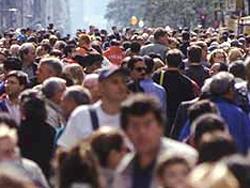Holiday Spending Expected To Rise, But Economic Uncertainty Looms
Stevens, PA, November 14, 2023-"Retailers and the consumers on whom they depend are rushing headstrong into the holiday shopping season, facing a level of economic uncertainty that they haven’t experienced since 2007, right before the Great Recession hit,” reports Unity Marketing.
“VUCA – volatile, uncertain, complex and ambiguous – is the watchword for how retailers must approach this holiday season and 2024 after that.
“If retailers keep their expectations low, they might be surprised. But they can’t take their foot off the gas because this holiday might just be the last hurrah before things take a turn for the worse, much worse.
“Back in 2007, the National Retail Federation projected a 4% rise in November-December retail sales. At the time, the NRF said expectations were below the ten-year average of 4.8% and acknowledged the weak housing market and credit crunch as tempering holiday shoppers’ plans.
“The 2007 holiday shopping season ended on a positive note, with retail sales up 3%, but the NRF said that economic pressures caused the sales climate to deteriorate during the season.
“Consumers this year are facing a similar weak housing market – sky-high interest rates are keeping people out of the market.
“And consumer credit has reached a breaking point. According to the New York Federal Reserve, credit card debt reached an all-time high of $1 trillion earlier this year and nearly 60% of consumers are worried about their ability to get more credit.
“Complicating the outlook further is the New York Fed’s finding that nearly 14% of consumers expect they could lose their jobs next year. The latest jobs report showed job growth is slowing and unemployment is on the rise, giving credence to the Wall Street Journal’s headline, “Sharp U.S. hiring slowdown signals cooling economy ahead.”
“In addition, U.S. households took an income hit in 2022, with median income dropping 2.3% from 2021, more than double the 1% decline from 2006 to 2007.
“Then there’s the specter of inflation that consumers didn’t have to contend with in 2007 when the inflation rate averaged 2.8%. Through September this year, inflation is averaging 4.4%, well below the 8% in 2022, but still, it adds up to prices that are significantly higher than they were in 2021.
“Hanging over it all is the rising tensions on the world stage with Ukraine and Israel at war and the danger that the conflict in the Middle East could escalate further. Back in 2007, the U.S. military was still involved in Iraq and Afghanistan, but the initial shocks from the mounting tensions had passed. That is surely not the case this year, especially concerning the Middle East.
“All in all, things look just as bad, if not worse, than in 2007 before the economy took a nosedive.
“The National Retail Federation is hedging its bets after missing its 6% to 8% increase projected last year when sales advanced 5.3%. This year, it is projecting that November and December retail sales will advance between 3% and 4%, slower than the past three years, but still in line with the average 3.6% increase from 2010 to 2019.
“As expected from an association that’s the nation’s cheerleader for the retail industry, NRF president and CEO Matthew Shay put a positive spin on the forecast.
“‘In spite of the uncertain economy and the challenges households are facing, we’ve seen strength and resilience across the consumer sector,’ he said during the press briefing, as he added, ‘Retail sales have now grown year over year for 41 consecutive months. That’s every month since May of 2020.’
“Stressing that spending decisions are based equally on financial ability as much as emotion and tradition, the NRF is counting on the emotional factors to outweigh consumers’ practical considerations when it comes to holiday shopping this year. And in that, Shay may be right. We all need a little more cheer, given the state the world is in right now.”
